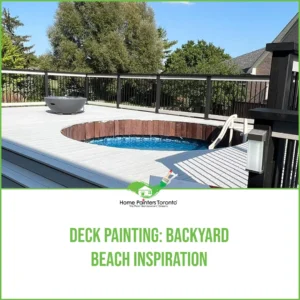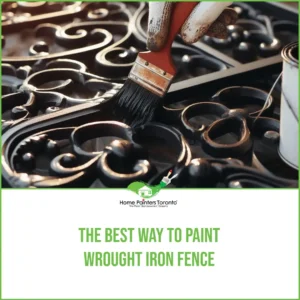
Have you noticed that your wood fence has started to slant? Does it look a little less stable than it used to be? A fence post that stands upright and sturdy is a secure fence, but a leaning fence post can pose safety hazards. It is a good idea to fix your leaning fence and get it back upright so it’s one less thing to worry about. Keep reading to learn all about wood fence restoration and repair, leaning fence repair costs, and gate repair!
Identifying the Root Cause
Before embarking on any repair journey, particularly with a leaning fence, pinpointing the root cause of the issue is paramount. This foundational step ensures that any action taken addresses the problem at its source, preventing recurrence and ensuring the longevity of your solution. Below are key considerations and common culprits to investigate:
Post Condition
- Inspect for wood rot or rust, particularly at the base where moisture can collect.
- Check for signs of insect damage, especially in wooden posts.
Soil Stability
- Assess the soil around the base of the posts for erosion or signs of sinking, which can undermine stability.
- Consider recent weather events that may have saturated the soil and shifted post positions.
Installation Issues
- Revisit the depth and width of post holes—insufficient depth can lead to weak anchorage.
- Evaluate the quality and appropriateness of the initial materials used. For example, untreated wood or inappropriate metal types can succumb to environmental factors more rapidly.
Impact and Pressure
- Identify any external pressures, such as tree growth, construction activity, or habitual leaning or climbing, which can gradually tilt a fence.
- Look for signs of direct impact, such as vehicle contact or fallen tree limbs, which may have compromised structural integrity.
Environmental Factors
- Consider the prevailing wind direction and any recently increased exposure due to changes in surrounding landscapes.
- Examine for changes in water drainage patterns that might be undermining post foundations.
Aging and Wear
- Acknowledge the age of the fence. Over time, materials degrade, connections loosen, and structures lean.
- Regular wear from opening and closing gates attached to the fence can also cause lean over time.
These factors, individually or in combination, can contribute to the leaning of a fence. By systematically evaluating each possibility, you can ascertain the specific challenges at play in your scenario. This diagnosis informs a more targeted, effective repair strategy, marrying functionality and aesthetics while considering cost implications.
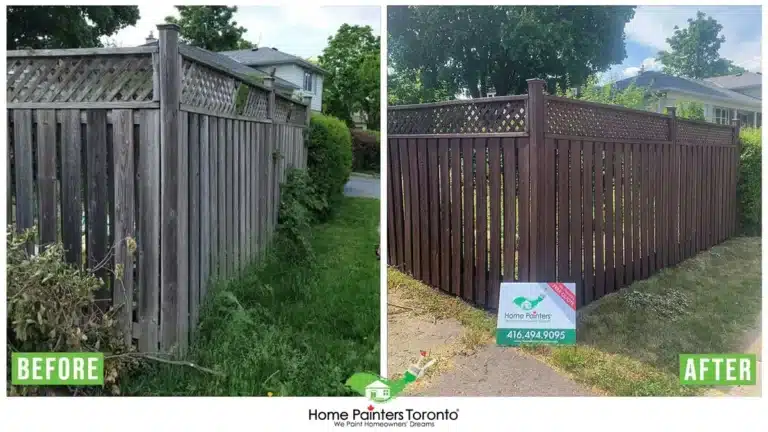
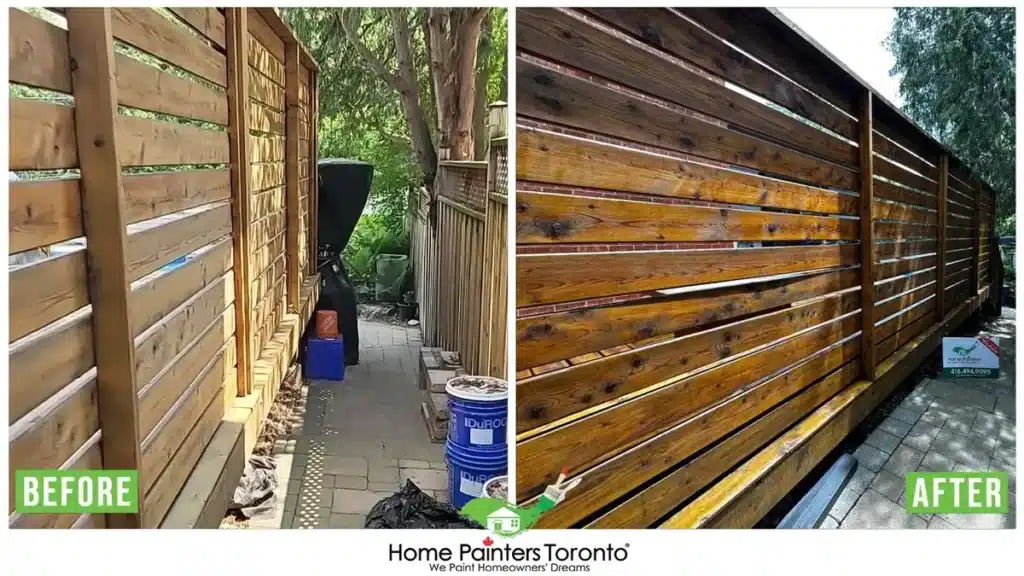
Materials That You Will Need To Fix A Leaning Fence
- Level
- Hammer
- Nails
- Shovel
- Sledgehammer
- Lumber Posts (2×4)
- Wooden Stakes (3 feet)
- Concrete
- Wheelbarrow (if necessary)
Step 1: Support the Lean
- This is where you need to locate where the fence and the post meet and drive the shovel into the ground beside the leaning post. Be sure to dig deep enough so you are able to push it back in place.
- Insert a stake into the ground using your sledgehammer deeply enough to secure it. Place the stakes about 5 – 6 feet from every post that has begun to lean in the opposite direction. Then place the stakes on the same side of the fence but parallel to the lean.
- Keep the post upright and use your level to make sure it all lines up correctly.
Step 2: Repair the Leaning Fence
- If you need someone to help keep the post in place, it will be easier to lodge the lumber post into the ground so it rests on the lower corner against the stake. This project usually works best when you have two sets of hands!
- Hammer a nail into the lumber so you can attach it to the post. Be careful not to let the nail go all the way through it.
- Now using concrete, mix it in a wheelbarrow or a large tub as the bag directs you and pour it into the holes surrounding each leaning post. Do not overfill; allow some room for the dirt to fill over it. Let the concrete dry for about 24 hours.
- Now, you can assess if the concrete has hardened enough before you put the dirt back over it. (You can add some grass seed if this is a concern) You can remove the stakes and lumber posts – the concrete should secure the leaning post enough that the 2 x 4 is not necessary.
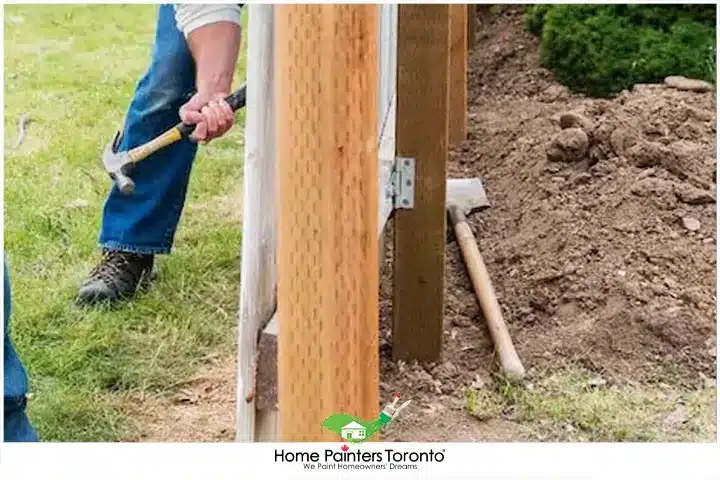
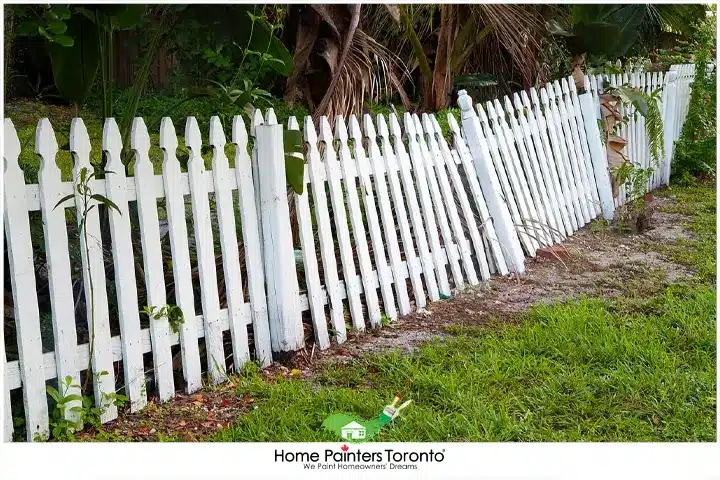
Step 3: Fixing a Wooden Gate
- If your gate needs to be fixed, detach it if you can and remove it from the fence section entirely. You can dig around the posts with a shovel and remove them. If it doesn’t come out easily enough, you might want to use a sledgehammer so you can take it out piece by piece.
- The fence is now most likely unsupported so you’ll need to use a level and prop it up.
- Dig a 3-foot hole and insert the new post. Using your level again, attach the fence rail to the hinge post with nails once levelled. Now you can remove the prop from the fence section.
- Nail the furthest side of the fence post tie a mason’s line and wrap it around the latch post. Set the hinge post so it touches the line and lines up.
- Screw studs in and mix up your concrete. Fill with concrete but don’t overfill – you will be putting the dirt back over the concrete once it has dried. Concrete usually takes 24 hours to completely dry.
- Reattach the gate.
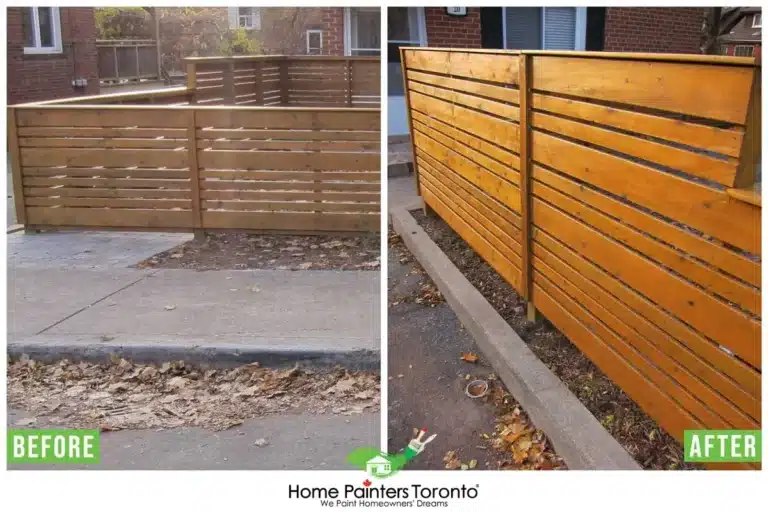
For Your Information
- If you hire a fence post repair contractor the cost can range from $200-$1,000 depending on the extent of the damage to the fence. If your fence has a minimal lean and can be fixed quite quickly by a professional, the cost will go down. However, the cost of time, labour and sometimes supplies can vary. Always be careful when hiring a contractor, make sure they are insured and offer you the best rate.
- If you plan on fixing it yourself the amount can also range from $150-$600 depending on how much supplies you need. Factor in the time it will take you to complete this project – so plan for a whole day.
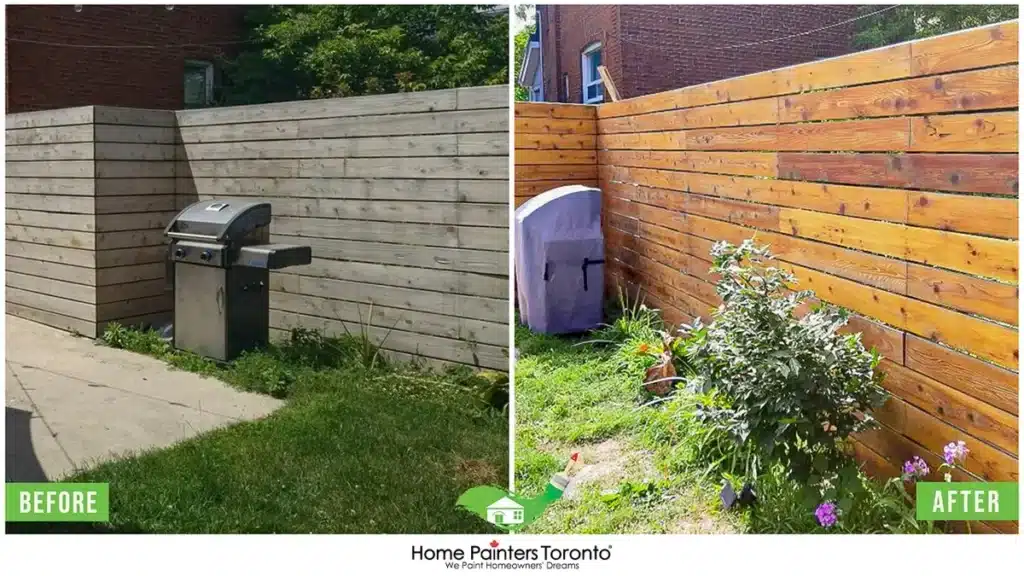
Conclusion
A leaning fence is more than an eyesore – it’s a call to action for homeowners to preserve the integrity of their property lines. By methodically diagnosing the cause, applying the correct repairs, and understanding the balance between immediate fixes and long-term solutions, you can confidently restore your fence’s structure and appearance. Always remember, that a fence is not only a boundary but an integral component of your home’s safety and curb appeal.
Keep in mind that while our focus here has been primarily on the fence, the context in which it stands – the soil, the climate, and the usage of the surrounding space – can significantly impact the health and stability of the fence. Regular inspections and maintenance are key in ensuring your fence stands the test of time and elements.
Don’t forget to visit our Pinterest page for all sorts of fence and deck painting inspiration!
More Interesting Blogs Related to
“HOW TO FIX A LEANING FENCE”
If your fence is all ready to go and you feel ready to paint or stain it, let us help! Call 416.494.9095 or email [email protected] for a FREE quote. And don’t forget to follow us on all our social channels below as well!



